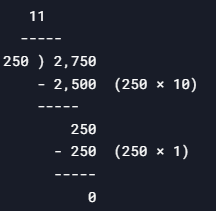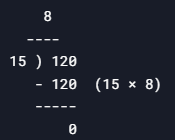Measurement of Length, Mass and Capacity | Math Olympiad for Class 5 PDF Download
Q1. A school playground is 2.5 kilometers long. How many meters is this?
(a) 250 meters
(b) 2,500 meters
(c) 25,000 meters
(d) 250,000 meters
Ans: (b) 2,500 meters
Follow the diagram given below for conversion:
We know 1 kilometer (km) = 1,000 meters (m).
So, 2.5 km = 2.5 × 1,000 = 2,500 meters.
Q2. A bag of rice weighs 5 kilograms and 750 grams. What is the total weight in grams?
(a) 5,750 grams
(b) 575 grams
(c) 57,500 grams
(d) 5,075 grams
Ans: (a) 5,750 grams
1 kilogram (kg) = 1,000 grams (g).
So, 5 kg = 5 × 1,000 = 5,000 g.
Adding 750 g, total weight = 5,000 + 750 = 5,750 grams.
Q3. A water tank holds 3.2 litres of water. How many millilitres is this?
(a) 320 millilitres
(b) 3,200 millilitres
(c) 32,000 millilitres
(d) 3,020 millilitres
Ans: (b) 3,200 millilitres
Follow the diagram given below for conversion:
1 litre (L) = 1,000 millilitres (mL).
So, 3.2 L = 3.2 × 1,000 = 3,200 millilitres.
Q4. A fruit seller has 8 kilograms of apples. He sells 2.5 kilograms. How many grams of apples are left?
(a) 5,500 grams
(b) 550 grams
(c) 5,050 grams
(d) 5,000 grams
Ans: (a) 5,500 grams
Total apples = 8 kg = 8 × 1,000 = 8,000 g.
Sold = 2.5 kg = 2.5 × 1,000 = 2,500 g.
Left = 8,000 - 2,500 = 5,500 grams.
Q5. A juice bottle contains 1 litre and 500 millilitres of juice. How much juice is this in milliliteres?
(a) 1,500 millilitres
(b) 15,000 millilitres
(c) 1,050 millilitres
(d) 150 millilitres
Ans: (a) 1,500 millilitres
1 litre = 1,000 millilitres.
Total juice = 1,000 mL + 500 mL = 1,500 millilitres.
Q6. A shopkeeper has 12 kilograms of sugar. He packs it equally into 4 bags. How many grams of sugar are in each bag?
(a) 3,000 grams
(b) 300 grams
(c) 30,000 grams
(d) 3,200 grams
Ans: (a) 3,000 grams
Total sugar = 12 kg = 12 × 1,000 = 12,000 g.
Each bag = 12,000 ÷ 4 = 3,000 grams.
Q7. A juice carton contains 2.75 litres of juice. How many 250 mL glasses can be filled completely?
(a) 8
(b) 11
(c) 10
(d) 9
Ans: (b) 11
Explanation:
2.75 litres = 2,750 mL
Number of glasses = 2,750 ÷ 250 = 11
Q8. A medicine bottle contains 120 mL of syrup. The doctor prescribed 15 mL per dose. How many doses are there in the bottle?
(a) 6
(b) 8
(c) 10
(d) 12
Ans: (b) 8
Number of doses = Total volume ÷ Dose per serving = 120 ÷ 15 = 8
Q9. A bucket holds 8.5 litres of water. How much is this in centilitres (cL)?
(a) 85 cL
(b) 850 cL
(c) 8,500 cL
(d) 85,000 cL
Ans: (b) 850 cL
1 litre = 100 cL
8.5 litres = 8.5 × 100 = 850 cL
Q10. A truck carries 3 tonnes of sand. How many kilograms (kg) is this?
(a) 30 kg
(b) 300 kg
(c) 3,000 kg
(d) 30,000 Kg
Ans: (c) 3,000 kg
1 tonne = 1,000 kg
3 tonnes = 3 × 1,000 = 3,000 kg
|
37 videos|109 docs|51 tests
|
FAQs on Measurement of Length, Mass and Capacity - Math Olympiad for Class 5
| 1. What are the standard units of measurement for length, mass, and capacity? |  |
| 2. How do I convert measurements from one unit to another? |  |
| 3. Why is it important to understand measurements in daily life? |  |
| 4. What tools can I use to measure length, mass, and capacity? |  |
| 5. How can I practice measurement skills at home? |  |


















